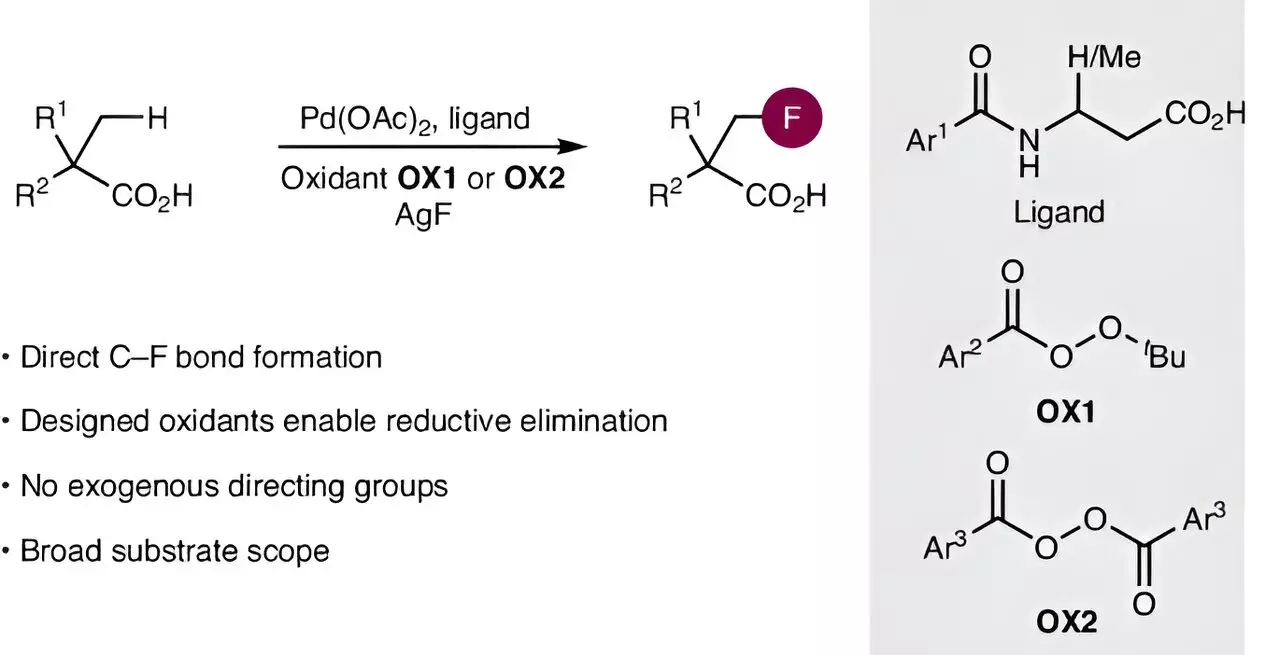Carboxylic acids represent a cornerstone of organic chemistry, playing a pivotal role in the synthesis of various pharmaceuticals, such as aspirin and ibuprofen. However, the introduction of functional groups, like fluorine, into these compounds has historically posed substantial challenges, often necessitating elaborate and lengthy synthetic processes. Recent advancements reported in *Nature Synthesis*, by a collaborative team from Kiel University’s Otto Diels Institute of Organic Chemistry, spotlight a novel approach that significantly streamlines the fluorination of aliphatic carboxylic acids. This breakthrough is likely to reshape the landscape of pharmaceutical development.
Tackling Chemical Complexities Directly
The traditional methods for introducing fluorine into molecules involve cumbersome multi-step reactions that are often fraught with inefficiencies. The groundbreaking technique developed by the research team eliminates the tedious steps by focusing on two intricate processes: the activation of carbon-hydrogen (C-H) bonds and the successful formation of carbon-fluorine (C-F) bonds. These two steps could be considered the holy grail in the synthesis of fluorinated compounds, which are known for their enhanced bioactivity in medicinal applications.
Professor Manuel van Gemmeren’s group has laid the foundation for this innovative approach, having previously established reliable catalysts to activate relatively inert C-H bonds. Their latest research has further optimized these catalysts to achieve a more efficient reaction design. Drawing on extensive research, Sourjya Mal, the study’s lead author, elucidates the significance of this work, stating that their catalyst’s design is integral to influencing the reaction mechanics at crucial junctures.
Innovative Reagents: A Game Changer
One of the standout elements of this study is the development of a bespoke oxidizing agent that deftly facilitates effective C-F bond formation. Established techniques previously employed were inadequate for aliphatic carboxylic acids, which necessitated this innovative solution. The team’s advances underscore the dynamic nature of research in chemistry where creativity and rigorous scientific inquiry converge.
The results showcased not just improvisation in laboratory techniques but a sophisticated understanding of chemical interactions. The researchers demonstrated that their tailored combination of catalysts and oxidants permits reactions that would have been otherwise impossible with previous methodologies. This novel reactivity pathway offers insight into potentially unexplored avenues in synthetic chemistry, promoting further investigations into other complicated synthetic strategies.
The Far-reaching Implications for Drug Development
The implications of this research extend beyond mere academic curiosity; it paves the way for more accessible pathways to synthesize complex fluorinated compounds, essential in pharmaceutical endeavors. Professor van Gemmeren expresses a compelling optimism regarding the practical applications of their findings, emphasizing the profound potential for expediting the development of new medications that leverage the benefits of fluorinated compounds.
The advances in this research not only signify a technical triumph but also a milestone that could democratize access to synthetic fluorinated carboxylic acids, potentially unleashing a wave of new drug compounds. Recognition of the importance of these molecules in pharmacological contexts is integral, as their unique properties can vastly improve therapeutic efficacy while minimizing side effects. The confluence of this research emphasizes a pivotal shift towards more sustainable practices in chemical synthesis that are critical for the future of drug development.

